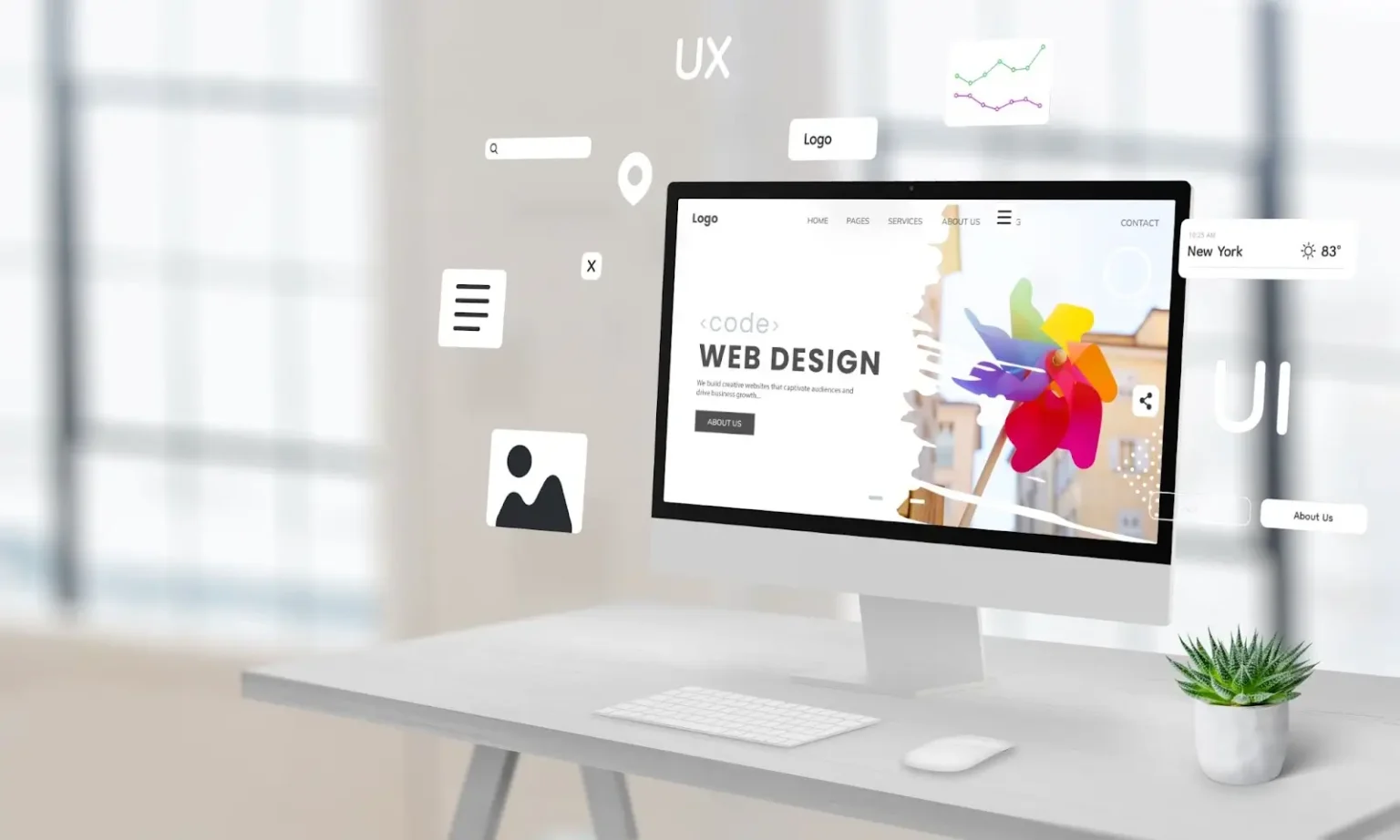The future of website innovation: what every web design company needs to know
The Importance of User Experience in Reliable Web Design Strategies
User experience (UX) offers as a cornerstone in effective web design methods. It shapes just how users engage with a site, influencing their contentment and chance of returning. A properly designed UX can boost interaction with intuitive navigation and responsive formats. Nonetheless, forgeting these facets may lead to irritation and raised bounce rates. Comprehending the intricacies of UX is crucial for developers aiming to create engaging digital experiences that reverberate with varied target markets. What aspects genuinely drive successful user involvement?
Comprehending User Experience and Its Effect on Layout
Although user experience (UX) is commonly perceived as a mere aspect of web design, it essentially forms exactly how customers communicate with an internet site. UX encompasses all elements of the user's communication, consisting of functionality, accessibility, and general satisfaction. A positive UX cultivates involvement, urging users to check out the website and return in the future. On the other hand, a negative experience can bring about disappointment, causing high bounce rates and shed opportunities for conversion.
Layout components like navigating, content, and design company play important functions in forming this experience. Effective UX design anticipates user needs and preferences, making sure that details is aesthetically enticing and conveniently accessible. Additionally, recognizing user actions via analytics can give beneficial understandings, informing design decisions that boost use. Inevitably, a thorough understanding of UX allows developers to develop web sites that not only draw in users but also advertise purposeful communications that straighten with company objectives and user expectations.
Trick Principles of Reliable User Experience
Effective user experience depends upon numerous essential principles that boost site capability and engagement. User-friendly navigating style, responsive design essentials, and the significance of aesthetic pecking order are important elements that add to a smooth communication in between individuals and web content. Understanding these principles enables developers to create more obtainable and easy to use electronic settings.
User-friendly Navigation Style
Intuitive navigation design serves as a vital entrance to their total experience when customers experience an internet site. Efficient navigating allows individuals to easily situate the information they look for, boosting their interaction with the site. Trick principles consist of clear labeling, logical company, and consistent positioning of navigating aspects. Labels need to be straightforward, enabling customers to forecast the web content they will discover. A well-structured power structure aids users comprehend the connection between different sections, leading them with the internet site seamlessly. Furthermore, responsive menus and easily obtainable web links contribute to a fluid experience across tools. By focusing on intuitive navigation, developers can considerably reduce user stress and increase engagement, ultimately fostering a positive assumption of the internet site and its web content.
Receptive Format Basics
A well-structured navigating system naturally leads to the need for a responsive layout, which is important in today's diverse electronic landscape. A receptive design assurances that websites function flawlessly throughout various tools, including desktops, mobile phones, and tablets. This flexibility boosts user experience by enabling web content to be conveniently obtainable and aesthetically coherent, no matter screen dimension. Secret principles of receptive layout consist of fluid grids, flexible pictures, and media queries, which promote excellent watching. Furthermore, prioritizing touch-friendly aspects improves communication on smart phones. By implementing a receptive format, designers can fit users' demands, reduce bounce prices, and boost interaction. Eventually, a well-executed receptive style fosters a favorable user experience, motivating site visitors to check out the web site better.
Aesthetic Power Structure Value
Visual hierarchy plays a necessary role in directing users with an internet site, making sure that vital information catches their interest. By purposefully using size, contrast, shade, and spacing, developers can produce a clear pathway for users to follow. Bigger components commonly attract the eye, showing their relevance, while contrasting colors can highlight phone call to action. Furthermore, consistent placement and collection of relevant material boost understanding, making navigating instinctive. Reliable use aesthetic power structure not just improves usability but also supports the overall visual of the website, fostering a favorable user experience. When customers can conveniently determine one of the most essential info, they are more probable to involve with the web content, causing boosted contentment and communication with the site.
The Duty of Usability in Web Design
Use plays a crucial duty in web design, especially through navigating simpleness and adherence to access standards. Reliable navigation improves user satisfaction by allowing site visitors to find info promptly and intuitively. At the same time, meeting access requirements assures that all users, regardless of their capacities, can properly interact with the website.
Navigating Simpleness
Simplicity in navigating stands as a cornerstone of efficient web design, substantially affecting user experience. A streamlined navigating system enables users to find information promptly and without effort, decreasing aggravation and boosting complete satisfaction. Clear labeling and sensible structure are vital components, directing individuals easily with the web site. Repetitive web links or excessively complex menus can disorient users, leading to increased bounce rates. Additionally, mobile responsiveness needs to be taken into consideration, ensuring navigation stays uncomplicated throughout devices. Decreasing and focusing on like this important pages clutter better supports user involvement. Efficient navigation not only fosters a positive experience but likewise urges customers to discover the site more thoroughly, ultimately resulting in higher conversion rates. In this regard, navigating simpleness works as a critical consider the overall effectiveness of web design strategies.
Availability Specifications
User interaction is significantly boosted when web sites stick to ease of access standards, making certain that all customers, no matter their capabilities, can navigate and engage efficiently. Conformity with these standards not just broadens the target market but likewise improves overall user complete satisfaction. Available design includes functions such as text choices for pictures, keyboard navigating, and sufficient shade contrast, which facilitate use by individuals with disabilities. In enhancement, applying these standards can positively affect seo (SEARCH ENGINE OPTIMIZATION) by boosting site structure and quality. As web design evolves, focusing on access ends up being vital in cultivating an inclusive digital atmosphere. By accepting these standards, developers add to a much more equitable web, ultimately driving user commitment and engagement.
Relevance of Responsive Style for User Involvement
As consumers progressively accessibility sites via a variety of devices, the value of receptive style comes to be extremely important for involving users successfully. Receptive design assurances that a website adapts effortlessly to various screen dimensions, supplying an optimal watching experience despite the device used. This versatility improves user involvement by promoting easier navigation and interaction with material.
When individuals encounter an internet site that is responsive, they are most likely to stay longer, explore further, and return in the future. A properly designed receptive design minimizes the aggravation frequently related to scrolling and zooming on smaller screens, consequently minimizing bounce prices. Additionally, responsive design can positively influence internet search engine positions, as internet search engine prioritize mobile-friendly sites. In today's digital landscape, where mobile usage continues to increase, implementing responsive design is not just helpful, but important for keeping user engagement and guaranteeing a positive experience across all gadgets.
Enhancing Load Times for Better User Contentment

To improve lots times, web developers ought to focus on maximizing images, leveraging browser caching, and reducing HTTP requests. Furthermore, employing Web content Delivery Networks (CDNs) can speed up material distribution by distributing it across different geographic places. Simplifying code, such as pressing CSS and JavaScript data, additionally adds to faster loading speeds.
Inevitably, a commitment to enhancing lots times not just boosts user complete satisfaction however likewise strengthens brand commitment and boosts the chance of repeat sees. A swift, smooth experience is vital for maintaining individuals and fostering favorable communications.
The Influence of Visual Pecking Order on User Interaction
Visual hierarchy functions as an important element in leading user communication on a web site. By organizing material in a method that focuses on info visually, designers can affect exactly how customers navigate and involve with a site. This pecking order is developed via different design techniques, including dimension, shade, spacing, and comparison. Larger typefaces or strong colors draw focus to critical aspects, such as calls to action or headlines, while subdued shades and smaller typefaces can suggest subservient info.
Effective visual hierarchy assists users swiftly identify what is crucial, reducing cognitive lots and enhancing use. It permits intuitive navigating, making it easier for individuals to locate what they need without frustration. As individuals interact with a web site, a well-structured aesthetic hierarchy cultivates a more rewarding experience, inevitably leading to greater involvement and conversion rates. Designers have to prioritize these principles to produce a effective and user-centered web atmosphere.
Determining User Experience: Devices and Strategies

Regularly Asked Questions
Just How Can I Enhance My Website's User Experience on a Spending plan?
To improve check my site an internet site's user experience on a budget, one can maximize page tons rate, simplify navigating, implement responsive layout, enhance content quality, and gather user comments for continuous refinements, ensuring a gratifying site visitor experience.
What Are Common User Experience Mistakes to Prevent in Web Design?
Usual user experience blunders in web design consist of chaotic layouts, poor navigation, slow loading times, absence of mobile responsiveness, neglecting availability, irregular branding, and failing to prioritize user feedback - Web Design services. Each can substantially hinder general site efficiency
Exactly how Typically Should I Update My Web Site for Better User Experience?
Web sites ought to be updated regularly, ideally every couple of months, to preserve ideal user experience. Regular updates assist address usability problems, rejuvenate web content, and adapt to altering user needs, making certain the website these details continues to be relevant and engaging.

Can User Experience Impact Search Engine Optimization Rankings on My Site?
User experience can significantly influence SEO rankings, as search engines focus on internet sites that provide smooth navigation, fast loading times, and interesting material. A positive user experience can result in reduced bounce prices and higher search presence.
What Function Does Availability Play in User Experience Layout?
Ease of access plays an important duty in user experience design by guaranteeing that all people, regardless of abilities, can connect and navigate with a web site properly. This inclusivity improves total complete satisfaction and involvement among diverse individuals.
User experience (UX) is often viewed as a simple facet of web style, it essentially forms just how users interact with a site. User interaction is greatly enhanced when web sites stick to accessibility standards, guaranteeing that all users, regardless of their capabilities, can navigate and engage properly. Gauging user experience (UX) is important for comprehending just how successfully an internet site fulfills the demands of its users. Additionally, functionality screening, where genuine customers browse the website while onlookers note difficulties, offers straight comments on user experience. Typical user experience errors in web design consist of messy designs, poor navigation, slow-moving filling times, absence of mobile responsiveness, neglecting ease of access, inconsistent branding, and falling short to focus on user comments.